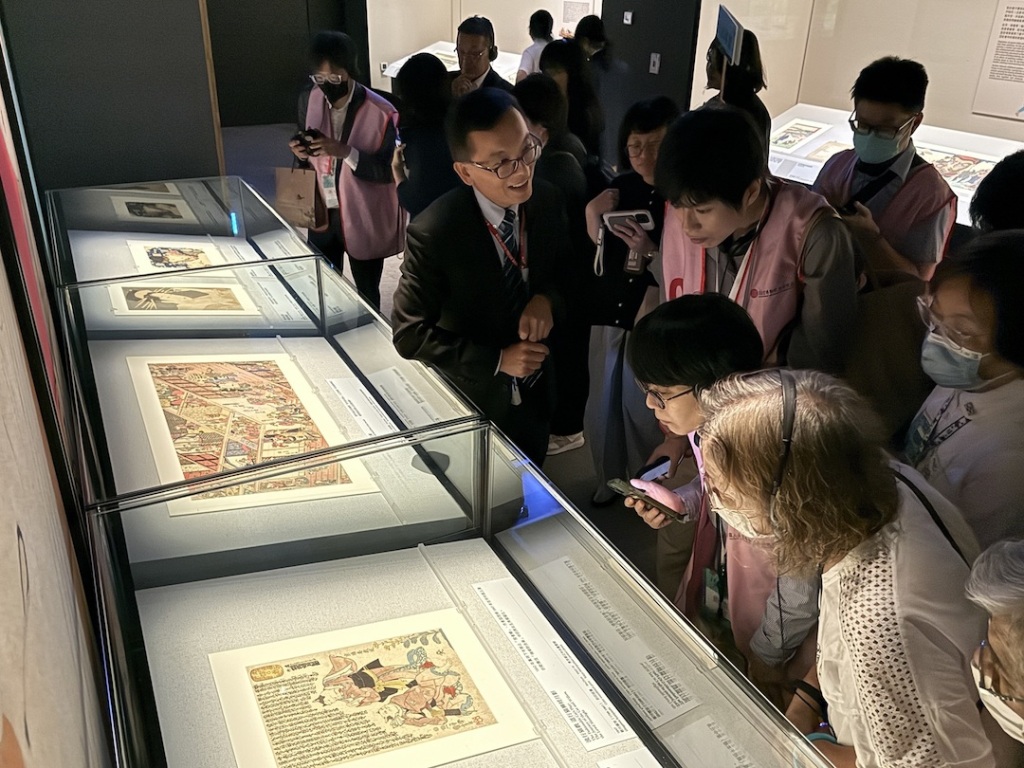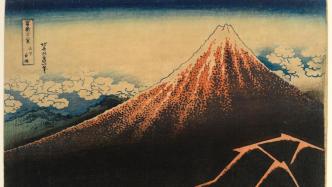
The simple and warm tea ware of Japan's Edo period, the calm and calm lacquer ware, and the beautiful Ukiyo-e objects that rise and fall in the world... including these cultural relics, "The Beautiful Orient - Exhibition of Japanese Cultural Relics from the Royal Ontario Museum in Canada" was held at the Shanghai World Expo on January 26 The museum officially opened, displaying 91 Japanese cultural relics collected by the Royal Ontario Museum in Canada. From Japanese tea ceremony vessels, maki-e lacquerware and customs in Katsushika Hokusai and Utagawa Hiroshige ukiyo-e, you can get a glimpse of the beauty of Japan's Edo period and present Japan's The life aesthetics of the Edo period and its relationship with Chinese culture.
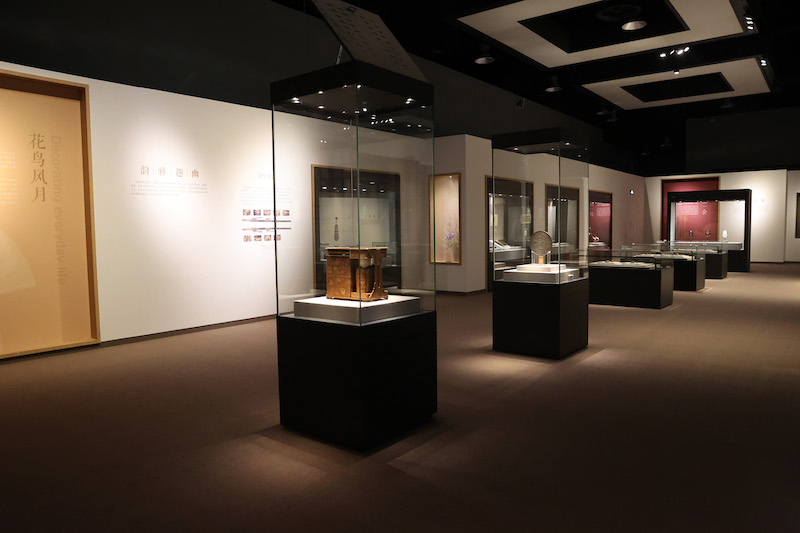
exhibition site

exhibition site
Social life in the Edo period was centered on cities, and the beauty of its simple utensils has now become a representative Japanese cultural element. The exhibition is divided into three units: "Tea Zen", "Flowers, Birds, Wind and Moon", and "One Session, One Meeting". Through representative exhibits such as tea ware, lacquer ware, and ukiyo-e, we can more intuitively explore the craftsmanship of traditional utensils and interpret Japanese culture. The absorption process interprets the unique beauty of Eastern culture.
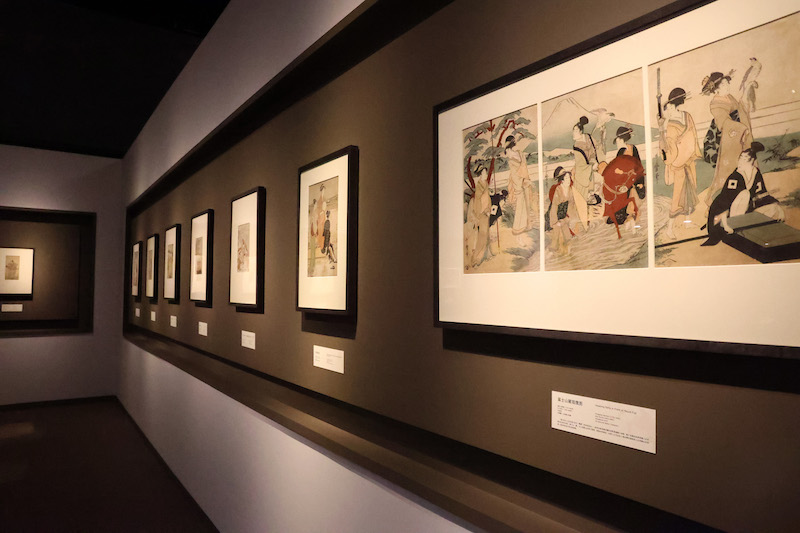
exhibition site
According to Liu Wentao, director of the Shanghai World Expo Museum, these cultural relics were originally located on the basic exhibition line of the Royal Ontario Museum in Canada. In 2019, due to the renovation and upgrading of the exhibition line at the venue, these cultural relics were able to travel abroad and come to China. The exhibition at the World Expo Museum is the third stop of the China tour after Suzhou Museum and Chengdu Museum.
"We start from the positioning of the World Expo Museum to conceive the temporary exhibitions we will hold in the new year. The integration and convergence of cultures are what we are concerned about. I think this exhibition is very consistent with the positioning of our museum." Talking about the Liu Wentao said that it is an opportunity for the exhibition to take place.

exhibition site
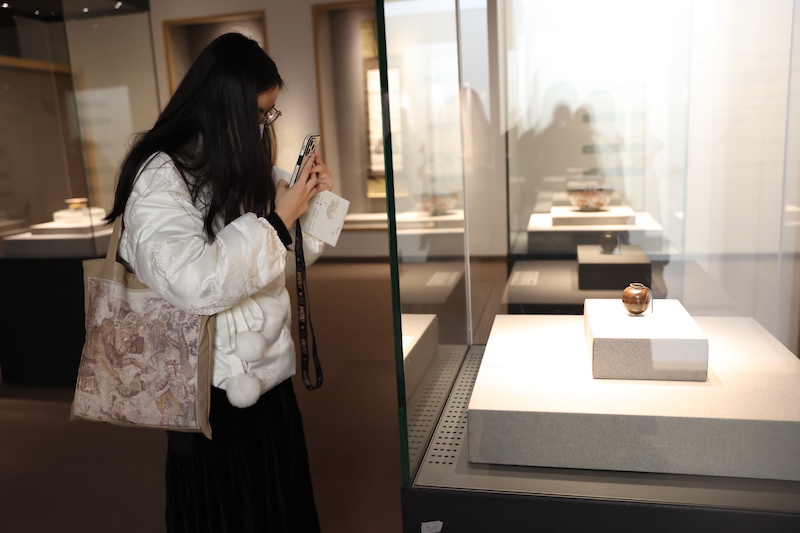
exhibition site
"This is a cross-cultural art exhibition in the truest sense to me." said Professor Shen Chen, chief curator of art and culture at the Royal Ontario Museum in Canada. "This exhibition builds a platform for audiences with different cultural backgrounds to understand each other and work together." Understand the diversity of our culture." Professor Shen Chen said that the Royal Ontario Museum of Canada is the largest museum in Canada and the second largest museum in North America after the Metropolitan Museum of Art in the United States, with a collection of nearly 1 million art and cultural collections. Among them, there are more than 43,000 Chinese cultural relics and more than 50,000 Japanese cultural relics.
The cultural relics on display this time are the essence of the Japanese collection of the Royal Ontario Museum (ROM). Most of them are export goods during the Meiji period or handed down from Japanese immigrants in North America. They were collected through donations, foundation purchases, etc., and have relatively high High artistic value and cultural value. They entered Canada more than 100 years ago, conveying Eastern aesthetics and art to Western audiences. To this day, audiences from different cultural backgrounds can still interpret them differently.
Tea Zen blindly
China is the first country to cultivate, prepare and taste tea. Chinese tea culture was introduced to Japan with Zen Buddhism. After integrating with local Japanese social life, it formed a cultural activity that combines religion, art, and culture. The first unit, "Tea Zen Yiyi", displays tea cans, vases, incense boxes, tea room utensils, etc., showing the basic ideas and spirit of Japanese tea ceremony.
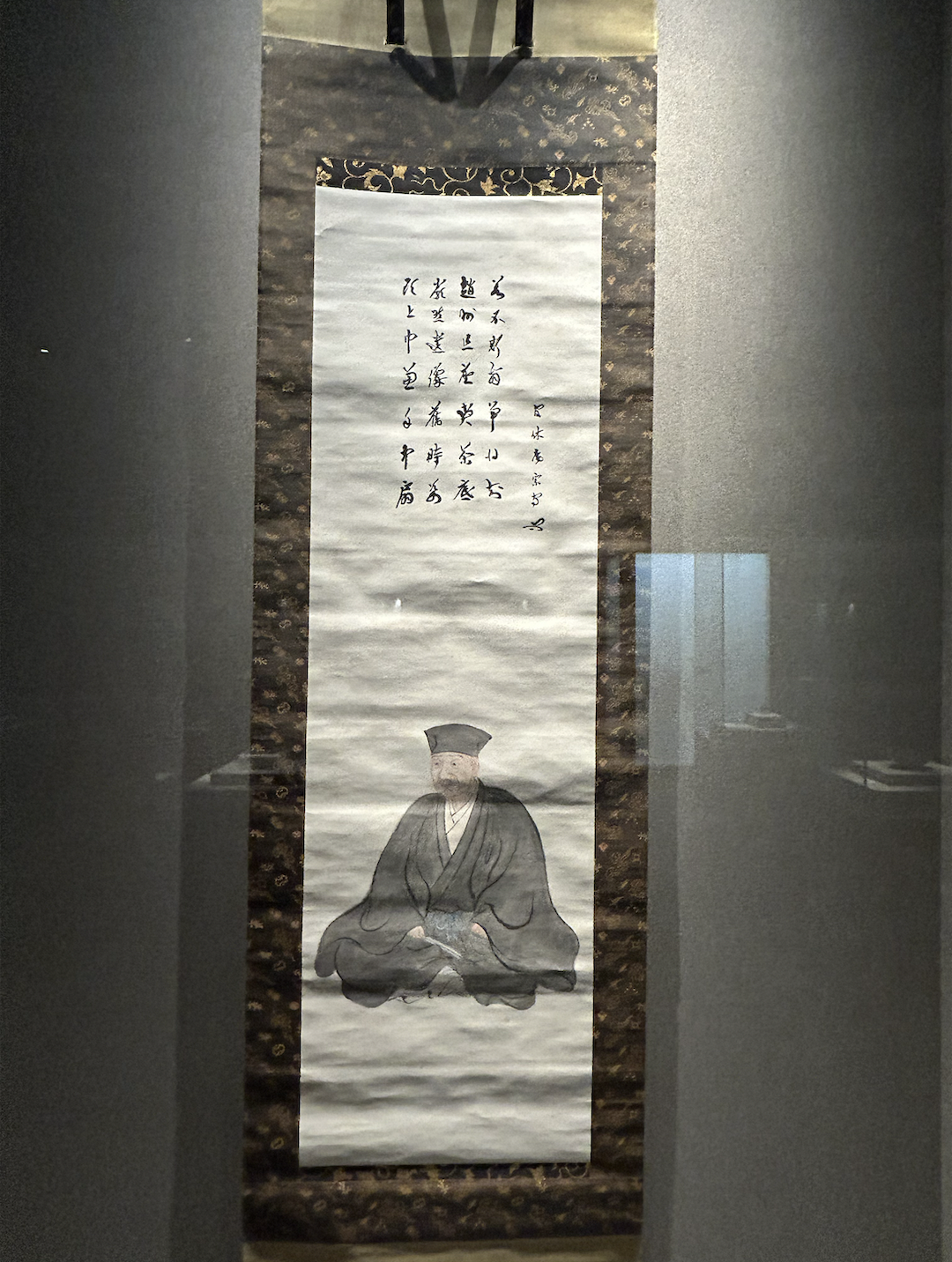
Exhibition scene "Hanging Scroll of Portraits of Sen Rikyu"
Sen no Rikyu, the master of Japanese tea ceremony, established the core idea of Japanese tea ceremony, continued Murata Shuguang's idea of "Buddhism is in the tea soup", and changed Zhuguang's tea ceremony idea of "respecting the purity of silence" to "respecting the purity of silence", which defined Japan's The basic idea and spirit of tea ceremony. The first exhibit in this unit is "Portrait Hanging Scroll of Sen Rikyu". Every spring on the anniversary of his death, Rikyu's hanging scroll like this is used at a tea party to commemorate the master's achievements.
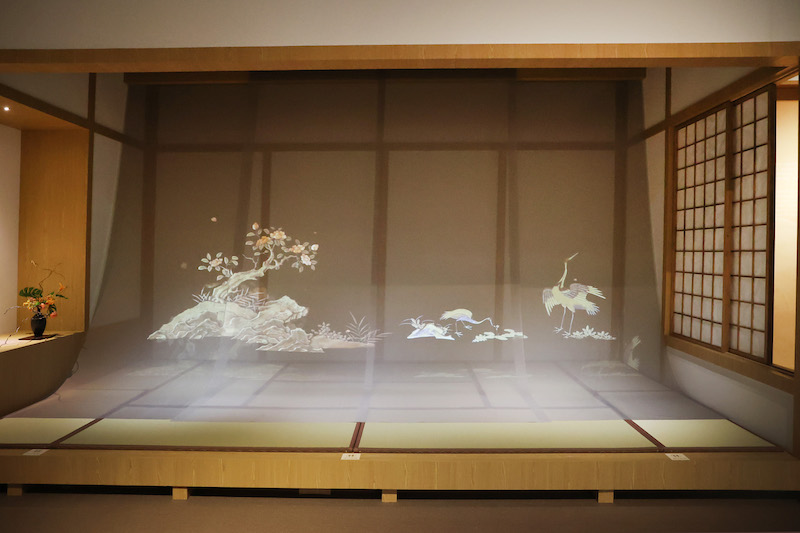
Landscaping of the first exhibition area

Landscaping of the first exhibition area
In the teahouse, the tea master's flower arrangement pays attention to the coordination with the surrounding environment. The small incense box is used to store incense or incense wood. The tea master will put the incense into the fire before burning the charcoal. Tea masters are always unique in creating a peaceful and refined state of mind. The utensils used in the tea room all reflect certain Zen teachings.

Tang Dynasty Tomato Tea Jar Ming Dynasty (1368-1644)
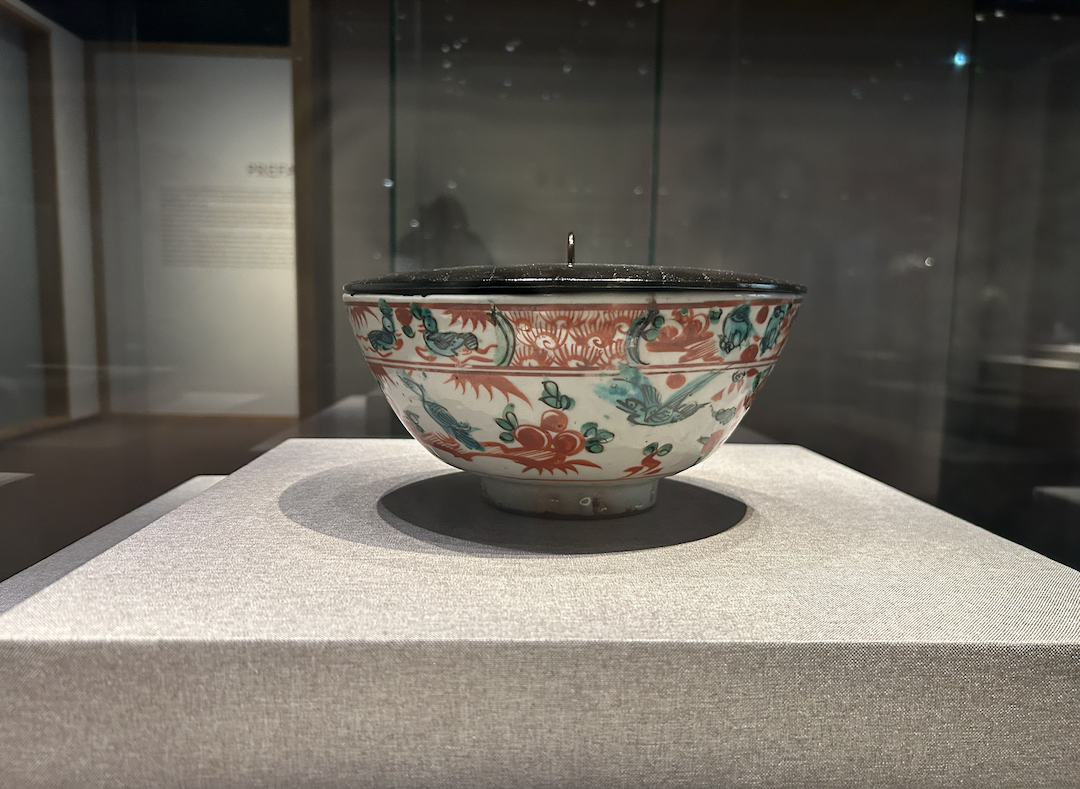
Shantou painted porcelain bowl from the Ming Dynasty at the exhibition
Japan is very particular about tea ceremony utensils, and there are many types of tea ceremony utensils. Each prefecture in Japan produces different types of ceramics. Since they are fired from local clay or porcelain clay, most of them are named after a combination of "name of origin + pottery", such as "Oribe pottery" and "Seto pottery". ”, “Mino-yaki”, etc., the difference is evident. The first unit displays Karatsu ware, Kyo ware, Hizen ware, Mino ware, Seto ware, Satsuma ware, Raku ware, etc.
Among them, the Rakushake teacup was invented by the tea ceremony master Sen no Rikyu (1522-1591). He wanted to invent hand-thrown thick-glazed pottery that fit his rustic tea philosophy, as opposed to the flawless Chinese porcelain that had previously been popular.
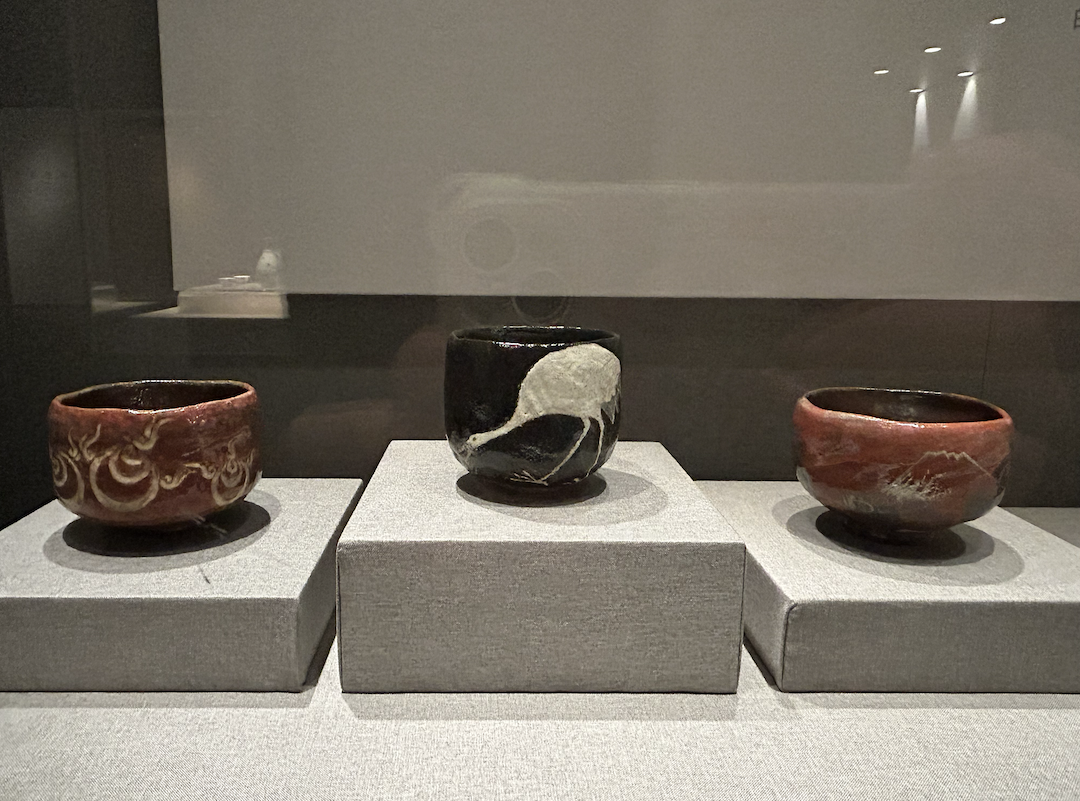
Rakushaki at the exhibition
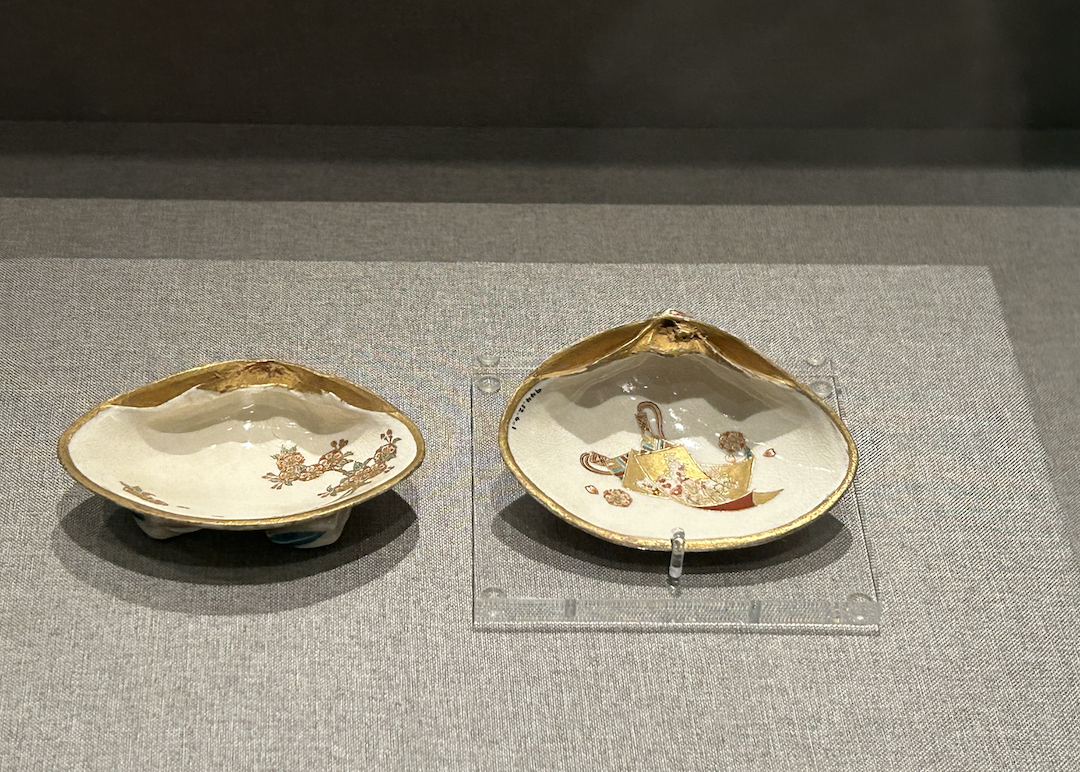
Satsuma-yaki nishite clam-shaped incense box at the exhibition

Mino ware at the exhibition
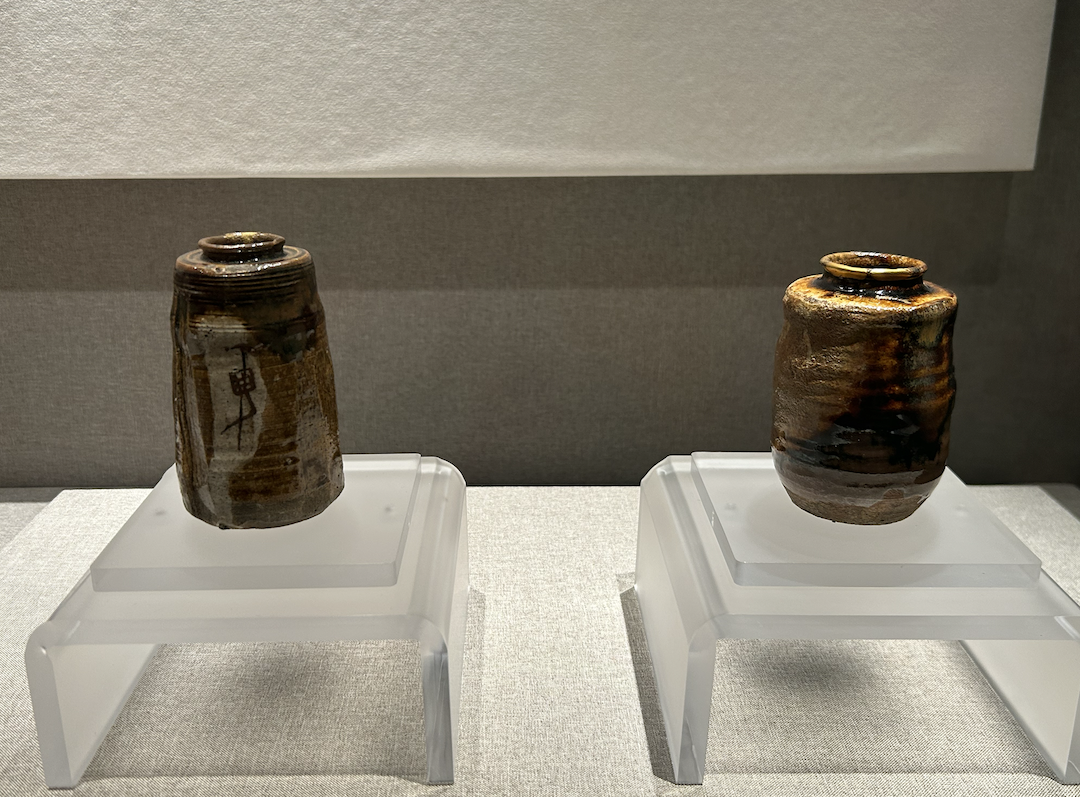
Seto ware at the exhibition
Flowers, Birds, Wind and Moon
On the basis of learning and drawing lessons from Chinese traditional culture, Japan has created traditional utensils with Japanese local customs through the integration and absorption of local culture. Most of the decorations on daily necessities and the presentation of works are based on natural scenery; the people's pursuit and love of traditional dramas reflect the taste and aesthetic psychology of popular culture at that time. The second unit, "Flowers, Birds, Winds, and Moons," displays lacquerware, supplies made using the Maki-e technique, and seal cages, among other items.
When Chinese lacquerware has entered the golden age, Japanese lacquer art has just started. Under the influence of Chinese lacquer culture, the Maki-e technique became increasingly mature during the Heian Period (AD 794-1192), and the technique of maki-e became increasingly mature during the Edo Period (AD 1603-1867). year) reached its peak. Maki-e lacquerware is one of the most representative lacquerwares in Japan. The addition of gold and silver painting techniques adds to its artistic expression and strong visual cultural impact. The oldest existing Maki-e lacquerware in Japan is the Nara Period (710-784) Tang sword "Gold and Silver Mother-of-pearl Tang Broadsword" collected in Shoso-in, Japan. The scabbard is decorated with Maki-e patterns.
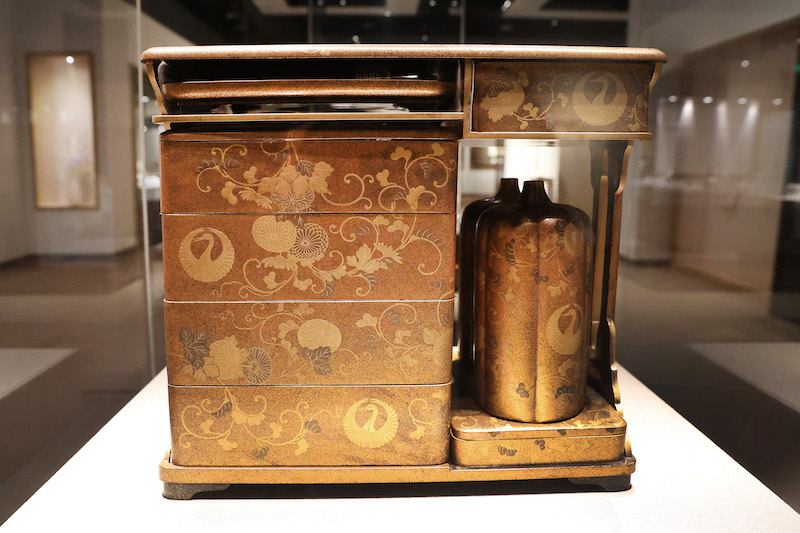
Maki-e suitcase at the exhibition Edo period (1603-1868)
A Makie tote box (literally "carrying tiered food box") is a portable picnic kit made of lacquered wood, consisting of small plates, sake bottles, and tiered food boxes that can hold four or five servings of food, and All fixed to the rack. Food carriers became popular during the mid-Edo period, when people went to seasonal gatherings or celebrate festivals, such as cherry blossom viewing, the Mid-Autumn Festival, and theaters, to bring food carriers for picnics. This food carrier from the Royal Ontario Museum is ornately decorated with gold maki-e and the family crest of a crane, indicating that it was part of the wedding furniture.

Exhibition view: Sanyou fan painting incense box
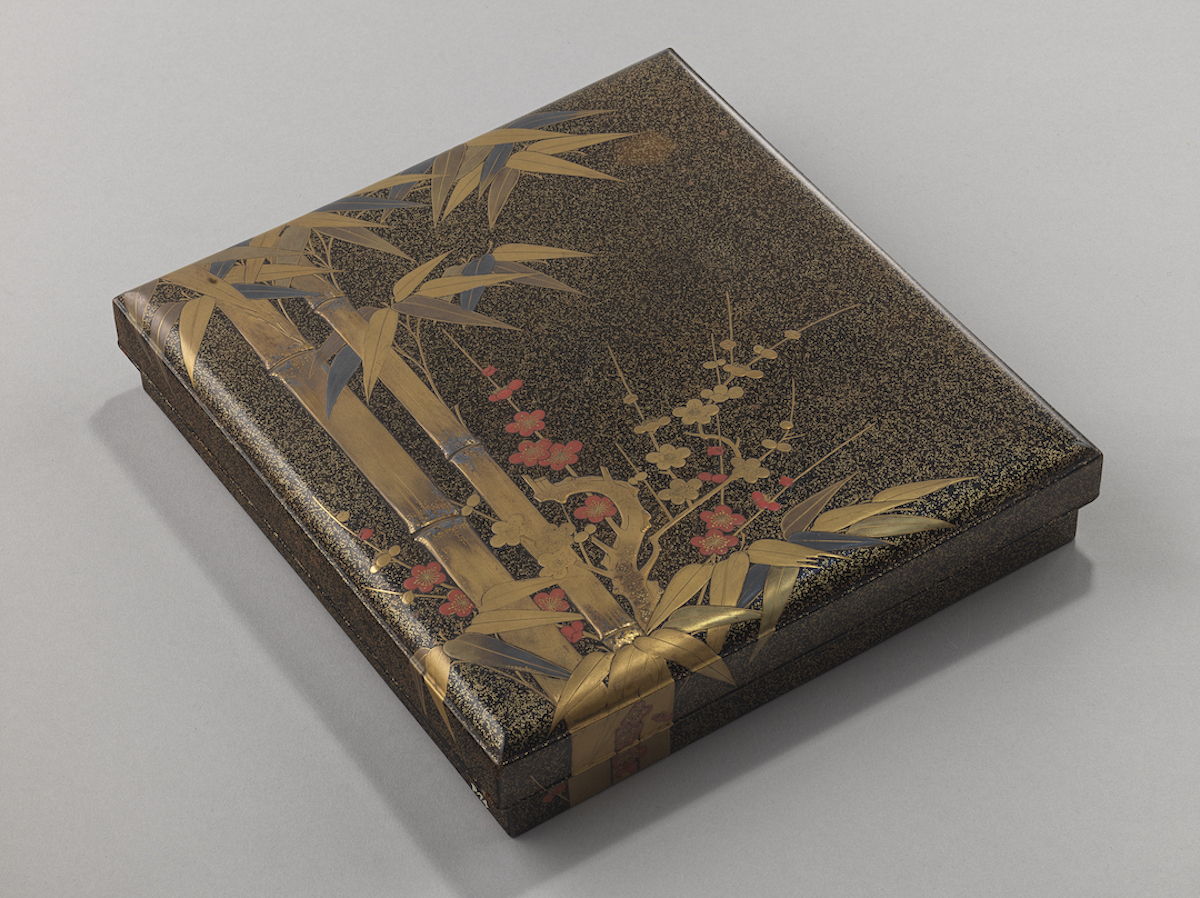
Miki-e inkstone box with Mitsuyo picture Edo period (1603-1868)

Ogawa Autumn Scenery Maki-e Inkstone Box Edo Period (1603-1868)
Inro was originally used to store seals, but during the Edo period it evolved into a container for storing medicine on the waist. This exhibition displays various styles of inrons, such as scroll-carved lacquer inrons, Chinese character-carved lacquer inrons, and Nio statues on the mountain gate with maki-e inrons. Among them, the Nio Statue Sanmon Gate Picture and Maki Einlong are three-stage structure. The front depicts the Nio Statue Sanmen Gate Picture. In Japan, Nio is also called Vajra Rikishi. The closed-mouthed Buddha statue is A-shaped, and the open-mouthed Buddha statue is Moo-shaped. In China, it is known as Humha Er. The general's name is well known. The back of the seal depicts pine trees in the mountains, suggesting that the temple was built deep in the mountains. There is a thread at the end of the rope, engraved with patterns such as Tang grass and cranes.
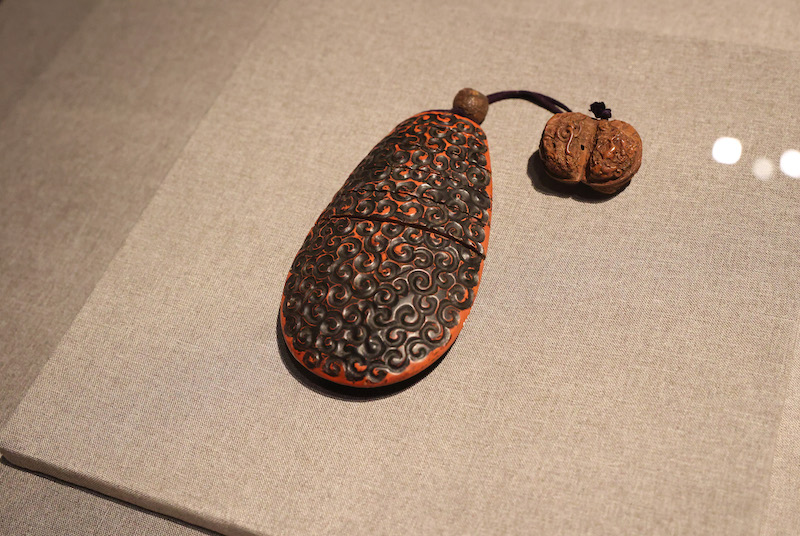
Exhibition site: scroll-carved lacquer seal cage
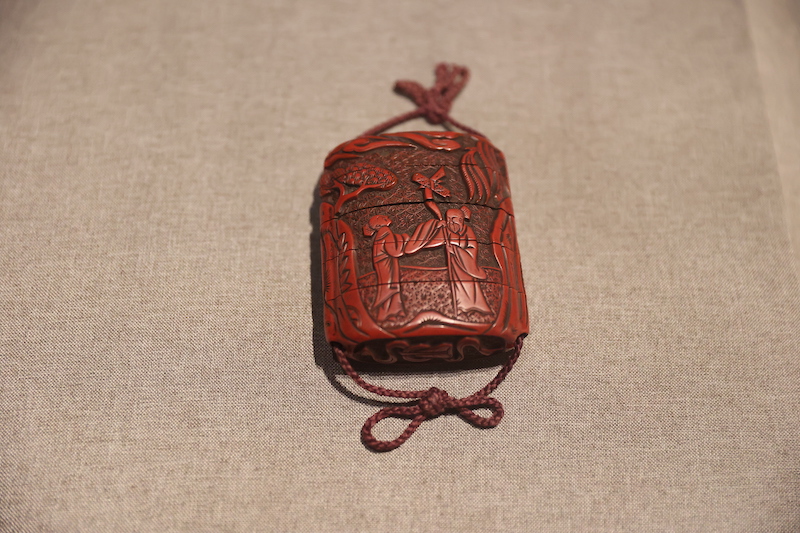
Chinese figure carved lacquer seal cage
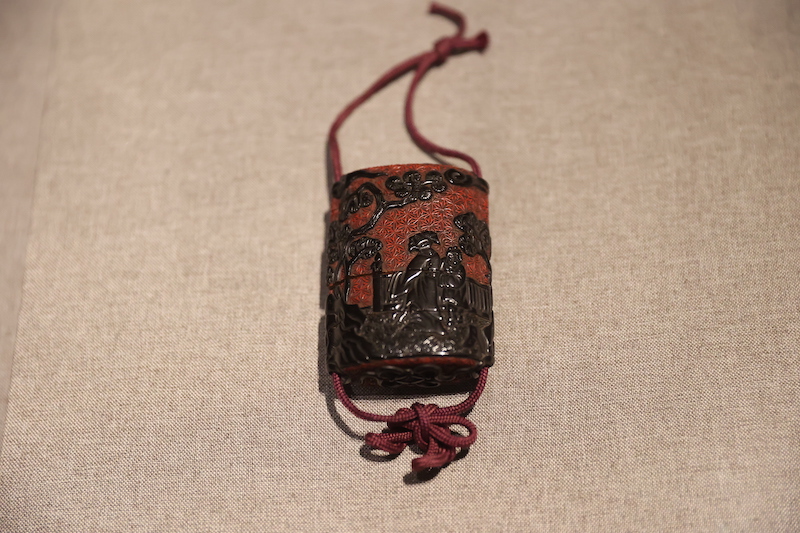
Chinese figure carved lacquer seal cage
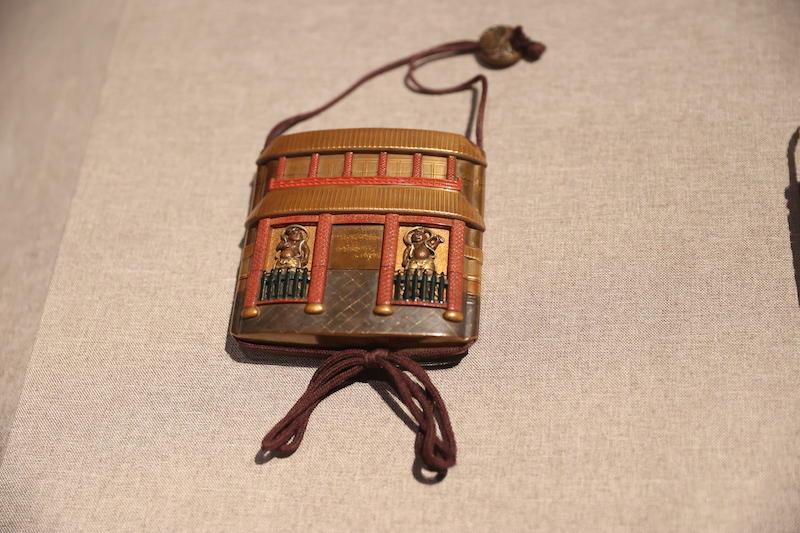
Nio Statue, Sanmen Gate Picture, Maki-e Seal Rong
Drama and music occupied an important position in the Edo period. Whether it was Japanese classical drama such as Kyogen, Noh, Kabuki, etc., or the performance of Japanese traditional musical instruments, it became an art that was appreciated by both refined and popular people. Noh drama is a kind of drama that uses masks and is based on ghosts or myths. Kyogen is humorous and set in modern society. It is a string performance of Noh drama. Most of the Japanese instruments are foreign instruments, such as taiko drums and shamisen. Strings, thirteen-stringed zither, etc. were introduced from China and developed a unique harmonious charm. The exhibition displays masks, harp and other objects used in Noh drama.
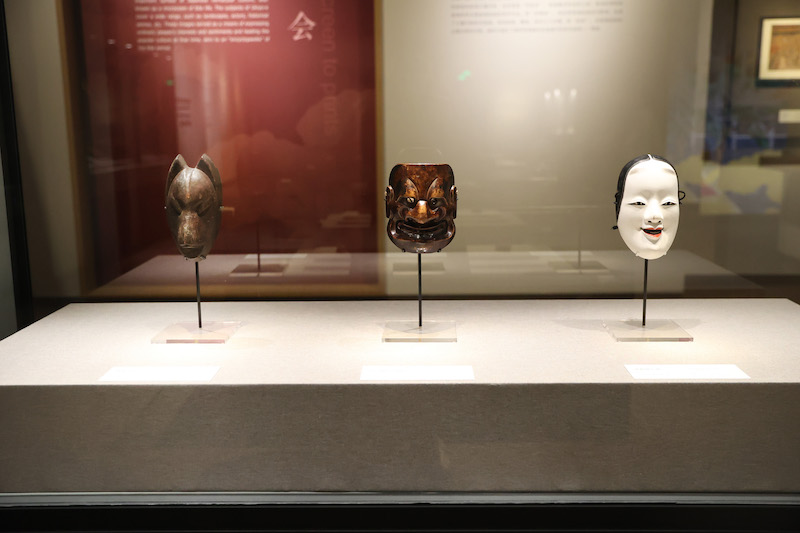
Exhibition scene: From right to left, fox-faced wooden model, kyogen martial evil mask, small mask for Noh drama
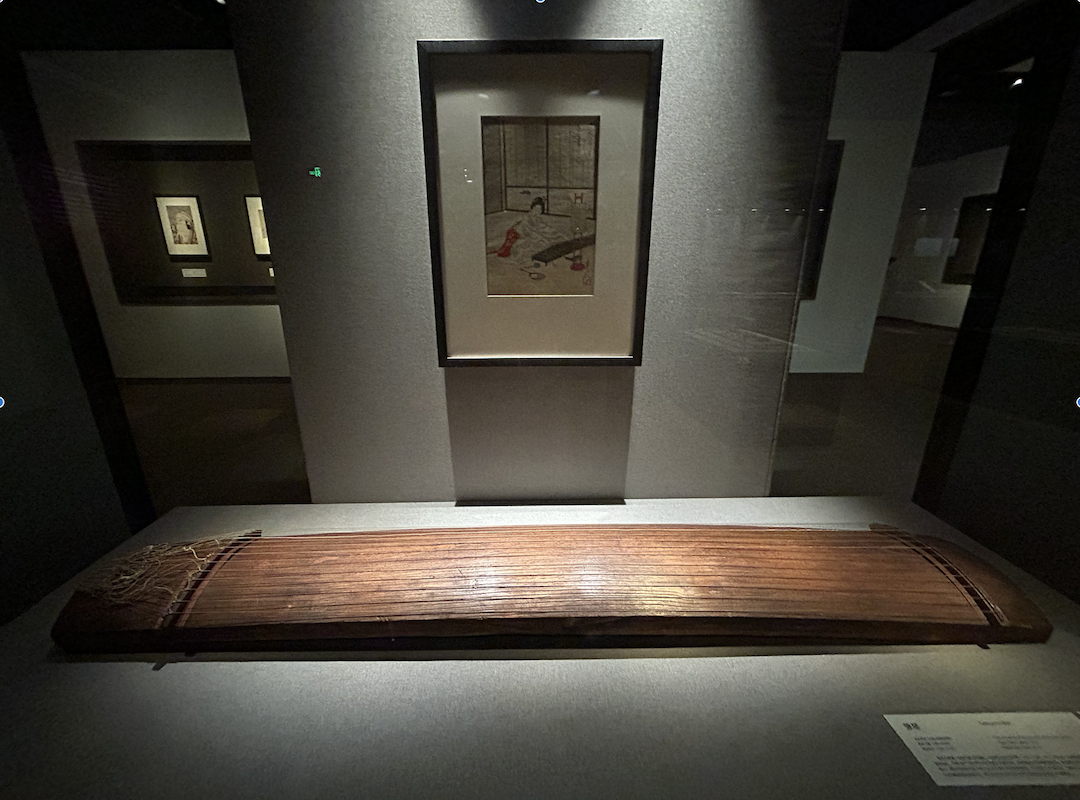
Thirteen-stringed zither at the exhibition
One for a while
Ukiyo-e is a highlight of Edo period culture, an important symbol of Japanese popular culture, and is also known as the epitome of Edo people's life. The themes of Ukiyo-e include scenery, actors, historical stories, etc. It is one of the important carriers for disseminating information, just like the "encyclopedia" of the Edo period. The third unit, "One Issue, One Session", displays masterpieces by famous Japanese Ukiyo-e artists, including the Torii School, Katsukawa School, Hokusai School, Utagawa School, etc.

exhibition site
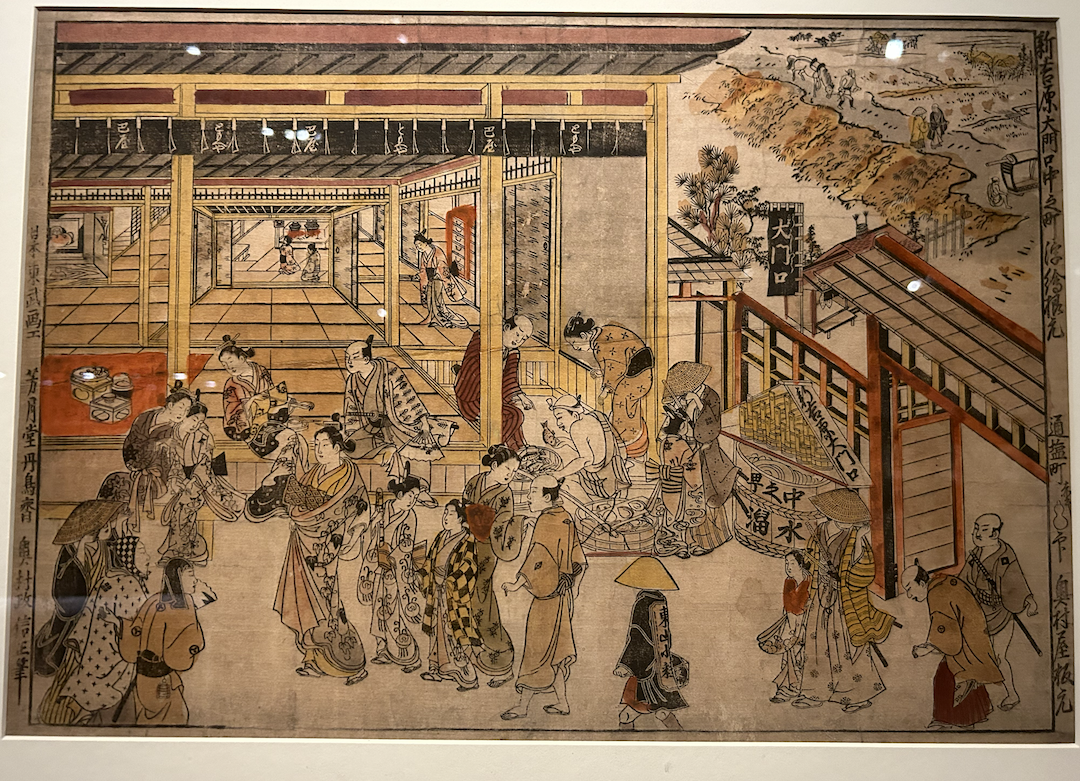
Exhibition site Shin-yoshiwaramon Nakano-machi floating paintings Nemoto Okumura Masanobu Edo period woodblock prints

Exhibition view Ichikawa Danjuro Fifth Generation Katsukawa Haruhide Edo period
The word "floating world" is originally a Buddhist term, which means life in the earthly world. It often means that life is impermanent and short, and we must enjoy everything we have and enjoy it to the fullest. During the Edo period, people's interest turned to the fashions and customs of the same era, and a large number of paintings and prints depicting various aspects of life for ordinary people were produced. These are "ukiyo-e", which are paintings that depict the glitz and glamor of the world.
The original Ukiyo-e was a single piece of work painted directly by the painter with a brush, that is, "meat pen painting". Later, influenced by the printmaking techniques of the Ming and Qing Dynasties, a large number of printed woodblock prints appeared, including painting, engraving, and rubbing. The first step, namely "board painting", woodblock prints were initially printed only in black and white, and then came the color prints that used multiple colors to be repeatedly overprinted - nishiki-e.
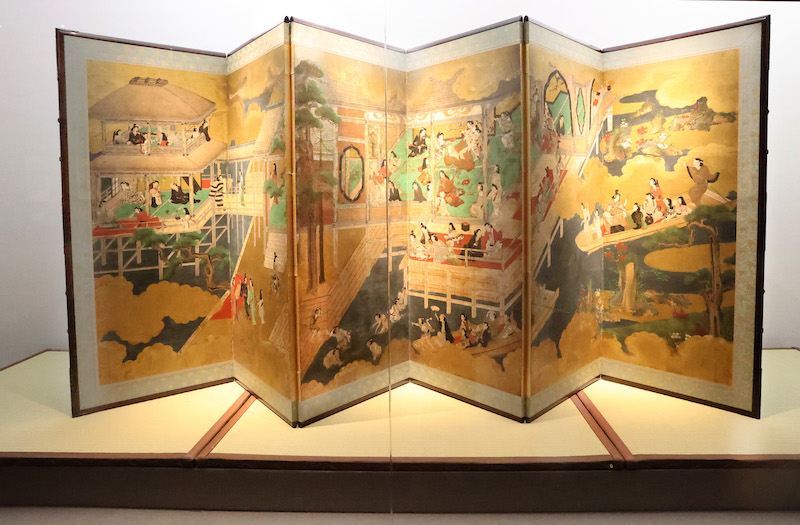
Exhibition site: Recreation screen in the residence, Edo period (1603-1868)
This single screen depicts scenes of recreational activities such as drinking, singing, and boating in a fictional romantic setting. The person in the painting looks happy and has a cheerful expression on his face. This colorful painting of secular scenes created by unofficial, non-academic painters was popular in the early Edo period (1603-1868) with those who wanted to share a sense of pure joy without political or religious intentions. This attitude and painting style later developed into Ukiyo-e woodblock prints, which literally means paintings of the ups and downs of the world and represented the popular culture of the Edo period.

Exhibition site: Recreation map screen in the residence (detail) Edo period (1603-1868)
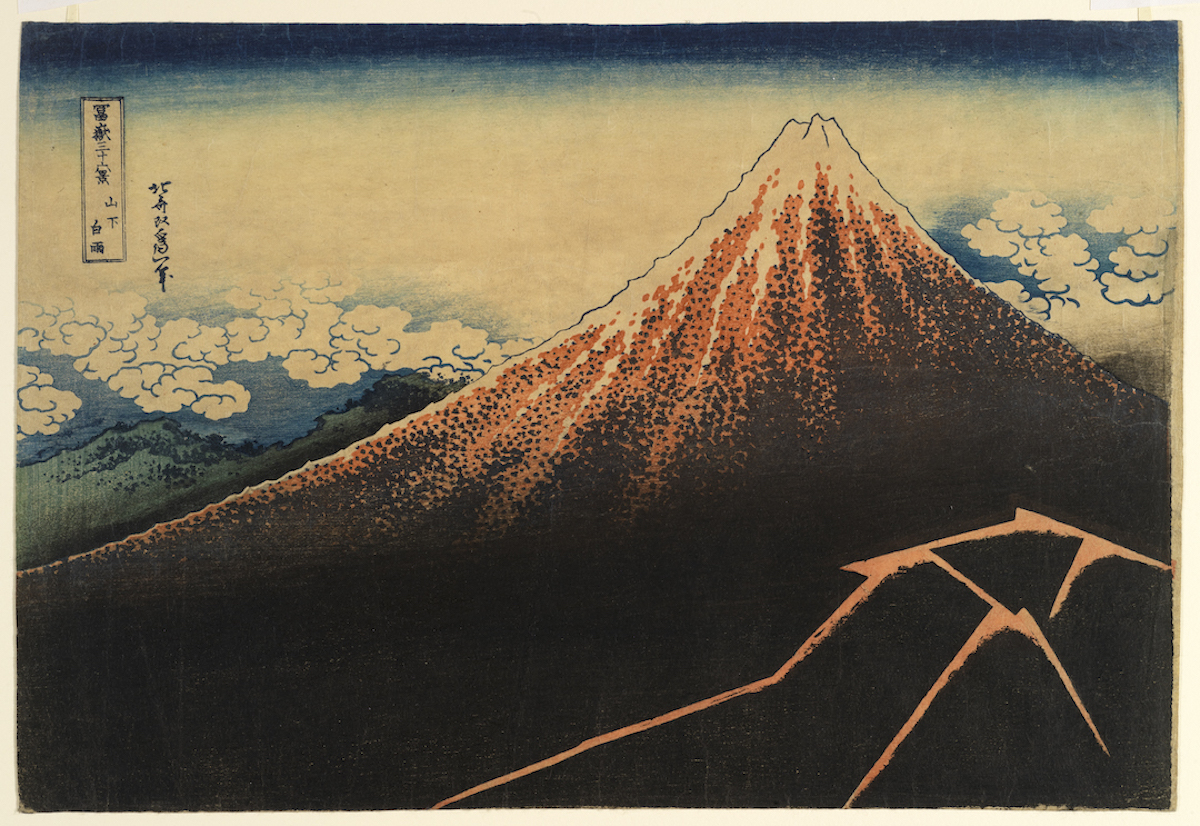
Yamashita Hakushu Katsushika Hokusai Edo period (1603-1868)
Katsushika Hokusai, one of the most famous Japanese artists of all time, Yamashita White Rain (Mount Fuji in Storm) is from the Thirty-six Views of Mount Fuji series. The series "Thirty-six Views of Mount Fuji" is his most famous work. This print depicts Mount Fuji in a more serious way as a thunderstorm approaches. Because of the sharp and deep color of the mountain, it is called "Black Fuji". Another painting in the same series with a similar composition is called "Aka Fuji" because it uses a more tranquil brushwork to depict Mount Fuji under a clear sky.
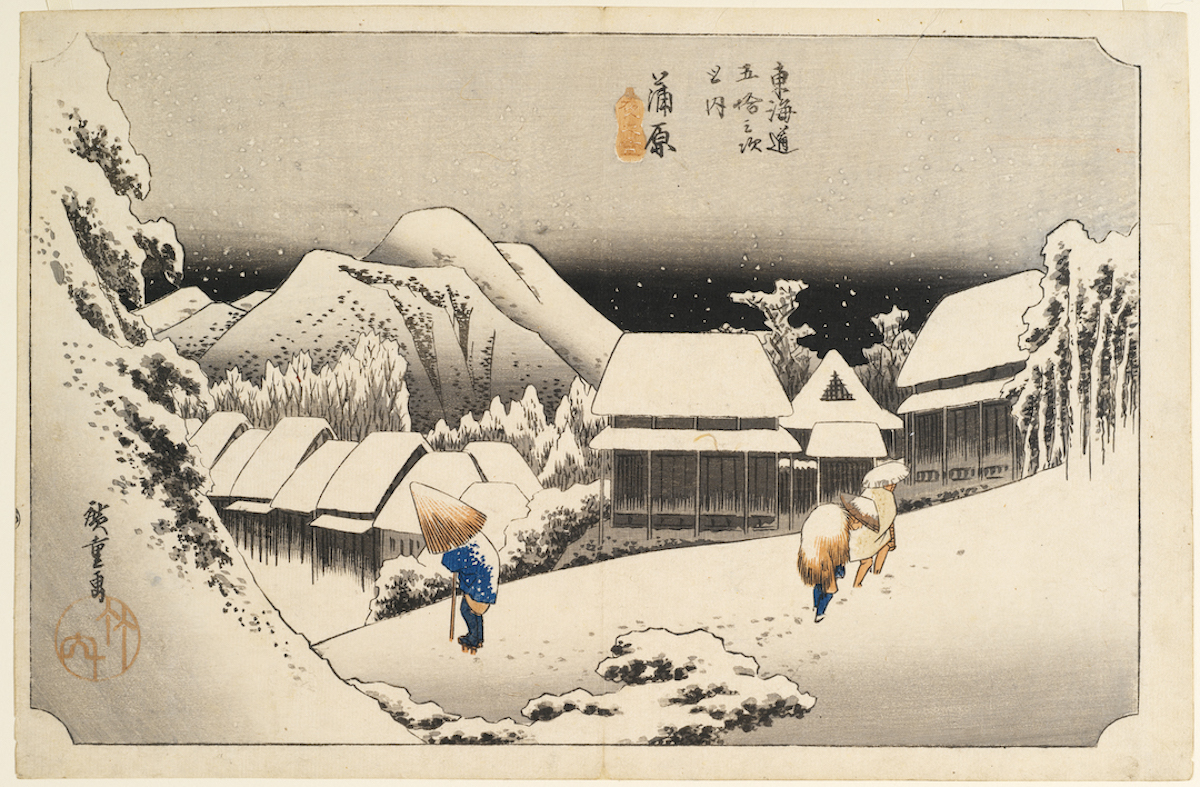
Tokaido Fifty-Three-Year Utagawa Hiroshige Edo Period (1603-1868)
The work "Fifty-Three Times on the Tokaido Road - Kabara" was created by the master of ukiyo-e, Utagawa Hiroshige. In 1832, Utagawa Hiroshige accompanied shogunate officials from Edo to Kyoto to present a royal horse to the emperor. The following year, with the help of his publisher, Utagawa Hiroshige compiled the sketches of the scenery along the trip into the famous masterpiece "The Fifty-Three Tokaido Roads", which provided the Japanese people at that time with a way to travel without leaving home. A visual experience of seeing mountains and rivers at a glance.
The exhibition lasts until April 7.
